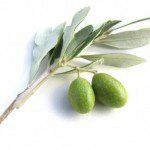
Olive Leaf Overview:
In the Mediterranean and throughout Europe, the olive leaf (Olea europaea) has served a variety of purposes. The usage of olive leaf’s date back hundreds of years when they were used to make crowns for returning soldiers. Since then, the olive leaf has been discovered to treat a wide variety of medical conditions. (El, 2009)
Benefits:
Olive leaves are made up of different types of polyphenols, oleuropein being the most common. Oleuropein is very important because research has proven that this chemical protects different types of cell membranes from being oxidized which untimely helps prevent cardiac disease. In addition, a recent study has proven that olive leaves help decrease hypertension and lower blood pressure. (El, 2009) Lowering these numbers also decrease the chances for heart disease. (Colihan, 2008) In some cases, oleuropein is changed into elenoic acid, which inhibits the replication of bacteria. (Horn, 2000)
Side Effects:
The olive leaf is very safe to use but there are minor side effects to using increased amounts. Such side effects include headaches, nausea, and possible fever. (Olive Leaf Side Effects, 2011)
Sources:
- Colihan, Kelley. “Olive Leaf to Treat Hypertension.” WebMD. WebMD, 8 Aug. 2008. Web. 05 July 2012..
- El, Sedef N.; Karakaya, Sibel. Nutrition Reviews. Nov2009, Vol. 67 Issue 11, p632-638. 7p. 1 Diagram, 1 Chart. DOI: 10.1111/j.1753-4887.2009.00248.x.
- Horn C. Olive leaf to fight infection. Natural Health 2000;30:40.
- Olive Leaf Side Effects – a Temporary Worsening of Symptoms.” Olive Leaf Side Effects. N.p., 2011. Web. 05 July 2012..
